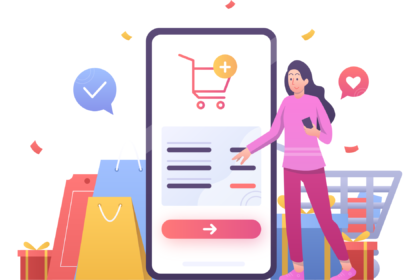You’ve secured the sale—congratulations! But what happens next? If you think that the customer journey ends at checkout, you’re in for a rude awakening. 56% of customers say they’re disappointed with their post-purchase experience, with Accenture reporting that only 17% of consumers feel businesses actually care about what happens after they buy.
That tiny, tragic percentage means most customers feel abandoned at the worst possible moment—when they’re eagerly awaiting their order. The truth? A stellar post-purchase experience isn’t just nice to have; it’s a loyalty-building powerhouse.
From proactive communication to seamless issue resolution, this guide will take you through critical strategies to keep customers happy, engaged, and coming back for more.
What is Post-Purchase Experience
The post-purchase experience refers to the activities you undertake and the interaction you have with your customers after they have purchased from your platform. It involves everything from sending them an ‘Order Confirmation’ email after processing their purchase to sending them a replacement product in case they request an exchange.
Key Elements of a Positive Post-Purchase Experience
Here are the critical elements of a positive purchase experience:
Streamlined Order Fulfillment and Delivery
Customers appreciate it when you value their time and display sincerity in ensuring their interaction with your e-commerce platform is nothing short or buttery smooth. This means facilitating accurate and streamlined order processing, quick and secure shipping of the package, real-time tracking to help them gain a quick update on where their order is and when they can expect the doorbell to ring, and lastly—timely delivery.
Regular Customer Communication
You cannot go radio silent once the customer has placed the order. That is ecommerce post-purchase experience 101. You need to ensure you stay in regular contact with them all through until delivery—post which, you can reduce the frequency of communication but by no means stop it all together.
Let’s break it down. After your customer places the order, they must receive regular and accurate updates on the status of the same—when it’s shipped, in transit, out for delivery, and delivered. After this, if they request an exchange or a return, provide them with status updates of their request, and if all goes well and they keep the product—share regular emails/SMS offering incentives for sharing feedback and returning to your store.
Reliable Customer Support
Nobody likes being hung out to dry—least of all your customers. And so, the next element of a positive post-purchase experience is ensuring your customer support always addresses your customer’s queries, issues, and doubts adequately.
After all, how likely are you to recommend or return to an e-commerce platform that couldn’t be bothered to help you once they’ve got their revenue?
After-Sales Service
No, this is not the same as customer support. Where customer support is focused on the technical aspects of processing customer requests, answering queries, and addressing issues, after-sales service deals with ensuring customers are satisfied with their orders.
This entails sharing guides, maintenance tips, and manuals to help customers gain the maximum out of their purchases. Good after-sales service helps make the customer feel valued and less like a dollar bill.
The Impact of Post-Purchase Experience on Customer Loyalty
Post-purchase experience is an essential building block for customer loyalty and driving your Customer Lifetime value (CLV). Here is how:
Streamlines and Optimizes Customer Experience
A smooth post-purchase experience reduces customer confusion by eliminating guesswork for customers. It ensures customers receive all essential information promptly so that they stay informed when it comes to their orders and have questions answered before they even arise.
Nurtures and Nudges Customers to Continue Association with Your E-commerce Platform
40% of an e-commerce business’s revenue gets generated by repeat customers. Over that, repeat customers spend 25% more than new customers and have an average conversion rate of 60%-70%, while that of new customers sits between 1%-2%.
Needless to say, you need your customers to stay engaged with you to drive your business goals. You achieve this with a positive post-purchase experience. When customers know you value them, they’re more likely to continue their association with you.
Ensures Customers Don’t Have to Work Too Hard
Your customers will have questions. But forcing them to contact you for even the most basic query is a recipe for a negative post-purchase experience. In fact, customer effort has an inverse relationship with customer loyalty—96% of customers lose their loyalty to businesses if they end up having to work hard to get help. Make sure you support your customers throughout the post-purchase experience and have them lift a finger only for exceptions.
Communication Strategies After Purchase
Here are some communication strategies to adopt with your customer post-purchase:
Facilitate Omnichannel Communication
Ensure customers can reach you effortlessly across multiple platforms—email, SMS, chat, or social media. A seamless, integrated communication strategy builds trust, keeps customers informed, and enhances their overall experience with your brand.
Personalize your Communication
Salesforce reports that 52% of customers say they’d switch to a different business if the customer experience was not personalized. Go beyond generic messages—use customer data to tailor updates, recommendations, and exclusive offers. A personalized touch makes customers feel valued, strengthens loyalty, and drives the chances of repeat purchases.
Prioritize the Channel the Customer Prefers
Respect your customers’ preferences by engaging them on their chosen platform, whether it’s email, WhatsApp, or social media. Meeting them where they are ensures higher engagement and a smoother, more satisfying post-purchase journey.
Give Back to Your Customers
Show appreciation through loyalty programs, exclusive discounts, or surprise perks. Rewarding your customers fosters goodwill, encourages repeat business, and turns one-time buyers into lifelong brand advocates.
Add Value to their Purchase
Enhance the customer experience by providing helpful content—how-to guides, styling tips, or maintenance advice. Offering practical insights makes your brand more than just a seller; it positions you as a trusted partner in their journey.
Managing Customer Expectations
The first step to managing customer expectations is knowing what they are. And today’s customer? Well, their list runs long:
- Personalization: 80% of customers say they are more likely to purchase from a business that personalizes their experience. Personalization is essential today if you want to attract, convert, and retain customers. Offer personalization throughout the customer journey, whether in communication or product recommendations.
- Multiple, secure payment options: Your customers want choices when it comes to how they pay for their orders. In fact, businesses that offer multiple payment options witness a revenue increase of nearly 30%. That said, you must balance choice with security—42% of customers have turned their back on an online purchase, citing security concerns.
- Informative customer reviews: 99.9% of customers read online reviews while making a purchase. And they’re powerful—research finds that reviews displayed for a lower-priced product can spike conversion rate by 190%. Social proof is essential for customers today and can very well be the difference between a casual scroll of the website/app and a solid purchase.
Reading this can seem overwhelming and bring thoughts like—where do we begin, meeting and managing these evolving customer expectations? But take a deep breath. We have you covered. LateShipment.com’s Post Purchase Experience Management tool automates everything from delivery tracking to returns and exchanges. So, managing the tall customer expectations today is as easy as onboarding our tool!
Handling Post Purchase Issues
While there is a long list of errors that a package can face while making its way from the e-commerce store, there are 5 major issues that you should be prepared for:
1. Where Is My Order? (WISMO)
Customers expect to be kept in the know of the whereabouts of their parcels as they eagerly await their delivery. When they are unable to see regular shipping event updates on the shipping carrier’s tracking page, they feel aggrieved and helpless. This, in turn, leads to repeated WISMO inquiries that consume all of your support reps’ time.
What You Can Do
To the modern consumer, it feels unnatural NOT to receive real-time updates on the status of their packages, which in turn forces them to bombard your support teams with WISMO calls to alleviate their anxiety.
You can handle such situations by being proactive in engaging your customers with timely order updates even before they request one. You can also take this a notch further and make order tracking self-service so that your customers get their hands on all the details they are looking for and, thus, don’t expect your support reps’ help.
2. Delayed Delivery
Let’s say your customers can easily track their parcels and are aware of their status at all times. While their anxiety is eased a bit, it is still not yet fully resolved — thanks to the inevitable occurrence of order delays during times like the holiday season.
Delays are bad, sure. But what makes it worse is the situation when your angry customer informs you about them instead of the other way around.
Unattended delays lead to bad delivery experiences. And 78% of customers won’t shop with a brand after just one instance of a bad delivery experience.
What You Can Do
Gain complete visibility into your shipments in transit and send out a quick replacement via an expedited shipping option if you notice one of your customers’ parcels getting delayed. Additionally, you could provide affected customers with a coupon code offering a discount for their next purchase.
Not all delays are due to shipping carrier errors. There can be uncommon cases, such as
- The package facing a standstill because of bad weather, customs delays, roadblocks, etc
- The package was delivered late simply because there was no one at the location to collect it
In such cases, keep your customers informed if their parcels might be delayed. This way, your customers will be impressed with your commitment to providing them with a great delivery experience and thus will give you another chance despite facing a delay.
3. Lost Package
Lost packages are worse than late deliveries and, for obvious reasons, make your customers more infuriated. This is because, unlike delayed packages, the odds of lost packages finding their way back to the customer are very slim and statistically unlikely.
Sure, the customer gets refunded in such cases. But think about the frustrations they faced. It’s going to leave a scar on their delivery experience and make it next to impossible to retain them.
What You Can Do
A lost package can come as a shock for a customer. Thus, the process to handle it must be done step by step.
- Like all post-purchase issues, initiate the communication instead of expecting them to find out eventually or waiting for them to come up with a WISMO inquiry
- Start by sending a “suspected lost package” notification as soon as you find a package going haywire while live-tracking all your shipments
- Have a support rep stay in touch with and periodically update the angry customer to placate them. Additionally, make sure to send a free replacement for the lost product by expedited shipping.
This way, you can demonstrate your commitment to the customer and possibly impress them enough to retain them moving forward.
4. Damaged Package
Just like getting lost, packages are delivered to customers in a damaged state more often than you might expect. The numbers are particularly high during the holiday season as parcel handlers are confronted with huge volumes and must work fast to clear them.
When an expensive order is found to be damaged, it causes a dent in your profit margin. But far greater is the resulting negative impact it has on the customer’s perception of your brand.
What You Can Do
As a first step, make sure to package right. Your parcel will likely undergo significant stress during handling and your packaging should be sufficient to protect the parcel.
As the next step, provide labels for return shipping within your parcel so that your customer can return-ship it back to you if required. Make sure to absorb the cost of this return shipping. Provide a replacement or a refund to the customer at the earliest.
5. Unsatisfactory Customer Support
As we mentioned, delivery issues are common and inevitable. However, lackluster customer support from your end while handling these issues can be more damaging to your reputation than the issue itself.
61% of the customers will stop doing business with you after one bad customer service experience.
Even the other four issues can be contained with proper customer support but the lack of an effective support team can cause even frequent customers to shun your brand.
What You Can Do
Make sure your customer support team is thoroughly trained to handle a variety of post-purchase customer queries ranging from late deliveries to damaged parcels and is always available to deal with issues when required.
Negligence or not fulfilling a customer’s expectations will be seen as bad customer service.
Empower your support reps to easily spot shipments that may require attention and work proactively to address delivery issues before being asked to by customers.
Leveraging Customer Feedback
There’s no better way for businesses to gain insights into their customers’ experiences and preferences than actively seeking and analyzing customer feedback. Know what your customers think of your post-purchase operations, what their expectations are etc, and work on meeting and exceeding them.
What’s more, customer feedback can be highly valuable in driving data-driven personalization and CLV:
- Engagement analytics: Leverage insights from post-purchase engagement KPIs like tracking page visits and open and click-through rates on notifications to include personalized and branded elements that put your brand on top of the customers’ minds.
- Optimize fulfillment (delivery and returns) operations and post-purchase CX: Gain access to a goldmine of data in the form of customer satisfaction feedback on delivery and return-related experiences to make post-purchase enhancements.
Apart from customer feedback, regularly tracking your customers’ parcels in the delivery and returns phases also gives you shipping intelligence on aspects such as on-time performance, returns trends, and other insights etc that help you unlock opportunities that improve your post-purchase operations.
Advanced Strategies for Post-Purchase Engagement
Interacting and engaging with your customers after their purchase doesn’t just help you keep their association with you alive but also helps you drive your revenue goals by increasing repeat purchases. If you’re wondering how exactly to go about this, here are some strategies for you:
- Share ‘Thank You’ Emails: A succinct ‘Thank You’ email is a great way to show your customer appreciation. You can also consider offering a free gift or similar incentive to bring them back to your platform for a repeat purchase.
- Share Order Notifications and Updates: Share personalized and timely communication right after your customer makes a purchase by sharing an instant ‘Order Confirmation’ email/SMS. Follow this up with regular updates that clearly mention the estimated delivery date. And if you really want to get it right, consider sharing a link to your branded tracking page to allow them to check in on their order updates independently.
- Request Feedback: Consider sharing a short post-purchase survey with your customer, asking them to share their experience. This can help communicate how much you value their opinion and prioritize their experience with your business.
- Make Informed Product Recommendations: With 35% of customers wanting to get product recommendations in emails, sharing links to offerings that complement your customer’s previous purchases is a great way to ensure they stay engaged with your platform.
- Offer Exclusive Discounts and Offers: Consider sharing exclusive and personalized offers to your customers on their birthdays, anniversaries, purchase-related (having spent a specific amount on purchases), or time-related (having completed a specific time period with your platform) milestones.
Measuring and Analyzing Post-Purchase Data
Your post-purchase data must be measured and examined to get the maximum out of it. There are no two ways about it. It’s critical to set up post-purchase analysis and logistics reporting to understand how the different components of your after-sales experience are faring to unearth trends and identify areas that need refinement.
While the components that you should keep an eye on depend on your unique customer journey, offerings, and growth goals, here are some metrics to keep an eye on:
- Customer Support Tickets: Monitor the number of support inquiries and their nature to identify trends and issues that should be addressed to improve customer experience.
- Repeat Purchases and Customer Retention: Gain insight into what products repeat customers purchase to understand your top and least performing offerings.
- Logistics Performance: Track how your carriers perform to help you make accurate delivery forecasts and set realistic expectations for customers.
- Returns and Exchange Rates: Track why and how often customers exchange or return items to make informed product and process improvements.
Conclusion
Any e-commerce business executive worth their salt knows how crucial a customer’s post-purchase experience is. It is, in many ways, more important than all the other stages of your customer journey. Fortunately, you can begin polishing yours with the strategies we discussed above to start making your customers fall in love with your platform.
But if you want to truly win at the post-purchase experience game, it’s time to onboard LateShipment.com’s Post-Purchase Experience solution.
LateShipment.com is the ultimate all-in-one post-purchase success platform for e-commerce retailers, D2C brands, and businesses shipping small parcels, regardless of their size or shipping volume.
Our Post-Purchase Success platform includes:
- Delivery Experience Management (DEM): To build memorable order delivery experiences and boost recurring revenue during order tracking moments.
- Returns Experience Management (REM): To make returns hassle-free with flexible return options and smart automations to help retain revenue.
- Parcel Audit and Shipping Refunds: To save big on shipping costs through automated shipping refunds and drive supply-chain optimization with in-depth shipping analytics and insights.
Also, LateShipment.com seamlessly integrates with 600+ Shipping Carriers and Business Tools that include E-commerce platforms, Order Management Systems, Helpdesks, and Marketing Automation tools to help you drive post-purchase experiences and shipping cost savings at scale.








